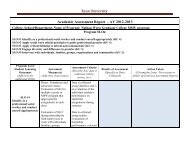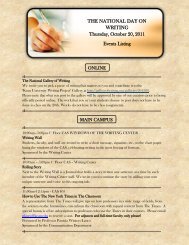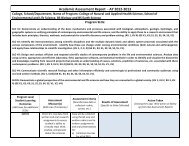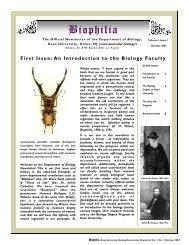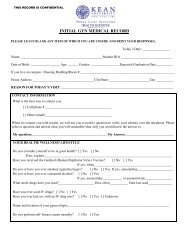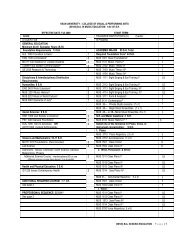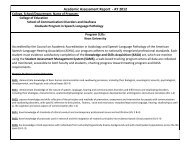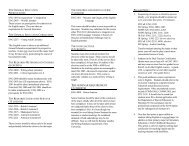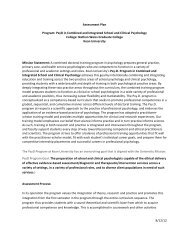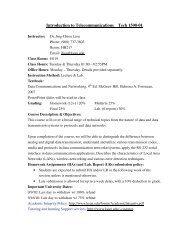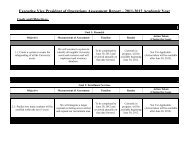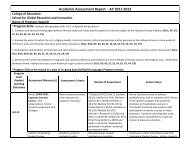Making Marks - Kean University
Making Marks - Kean University
Making Marks - Kean University
- TAGS
- marks
- kean
- university
- www.kean.edu
You also want an ePaper? Increase the reach of your titles
YUMPU automatically turns print PDFs into web optimized ePapers that Google loves.
A Collecting Obsession<br />
One is a thing. Two are a pair. Three or more are a collection.<br />
When I was a child, my father brought home bags of coins from the vending machines he worked<br />
on and let me pick out the pennies that I needed to fill my Blue Books. My grandfather brought me<br />
stamps, which I pasted into albums. Eventually, I became an active collector, mail-ordering franked<br />
foreign postage in bulk to fill up other albums; it was always a special day when a thick manila envelope<br />
arrived with my name on it.<br />
The same went for military patches. I was not all that enthralled with the armed forces, but, as with<br />
the stamps, I was fascinated by the colors, shapes, and patterned surfaces of the patches. A budding<br />
formalist at such a tender age!<br />
When I began my undergraduate work at what is now <strong>Kean</strong> <strong>University</strong>, I often traveled into New York<br />
City, where I picked up cards and posters at art exhibitions I visited. I used them to decorate my dorm<br />
room with an assortment of images, from Pop Art to Minimalism and Conceptualism.<br />
As a sophomore, I purchased my first “real” work of art, a Jim Dine offset lithograph signed on the<br />
plate and countersigned in pencil, all for twenty dollars (in those days, twenty dollars represented the<br />
sacrifice of at least two weekend movie-and-dinner dates). In my junior year, I was impressed by an<br />
exhibition, at the Vaughn Eames Gallery, of Mannerist and Baroque drawings from the collection of<br />
Professor Thomas Wilbur of the Fine Arts Department at <strong>Kean</strong> <strong>University</strong>.<br />
In the years after I graduated, these experiences morphed into an interest in collecting photography,<br />
a pursuit that was possible in the 1970s for someone of modest means. I discovered that my wife and<br />
I could display original works by well-known artists in our home for a surprisingly small sum.<br />
I soon acquired a portrait of Willem de Kooning by Rudy Burckhardt and a color image by Stephen<br />
Shore. By the 1980s, my interest in collecting had grown in many directions, from George Ohr pottery<br />
to folk art to drawings, a range of genres that received more or less equal attention.<br />
The collection has continued to take shape over the past thirty years. In general, my criteria for adding<br />
a work to the collection have included: high quality of execution, the unique expression of a period<br />
in art history, and the opportunity to learn more about the work or the artist—all tempered by the limits<br />
of my budget.<br />
My collection of drawings is not based on a slavish adherence to any particular theory or philosophy<br />
of art but has been shaped by my emotional connection to individual works, a connection that I feel long<br />
before I am able to articulate it. Only after this initial intimate contact can I begin to appreciate a work’s<br />
intellectual importance as a link in the historical chain of Modernism.<br />
That said, why did I gravitate to Modernism instead of other periods? What made me want to comprehend<br />
its intrinsic visual power? Modernism and its variety of styles tell the story of human experience from the<br />
late nineteenth through the twentieth century. Avant-garde artists reveled in the confluence of industrial<br />
and technological progress with an expanded understanding of the human mind, and they set to work<br />
5



